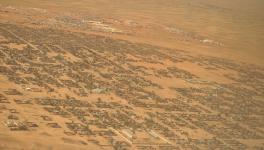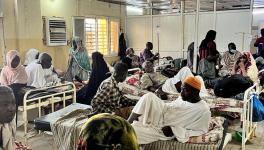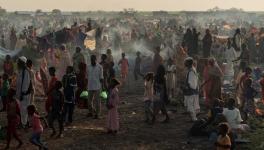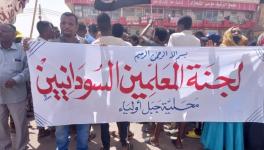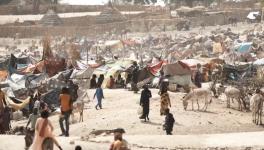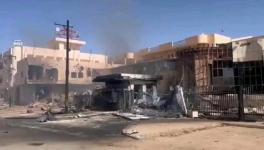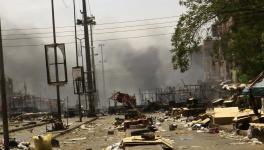Ethiopia Inaugurates Africa’s Largest Hydroelectric Dam
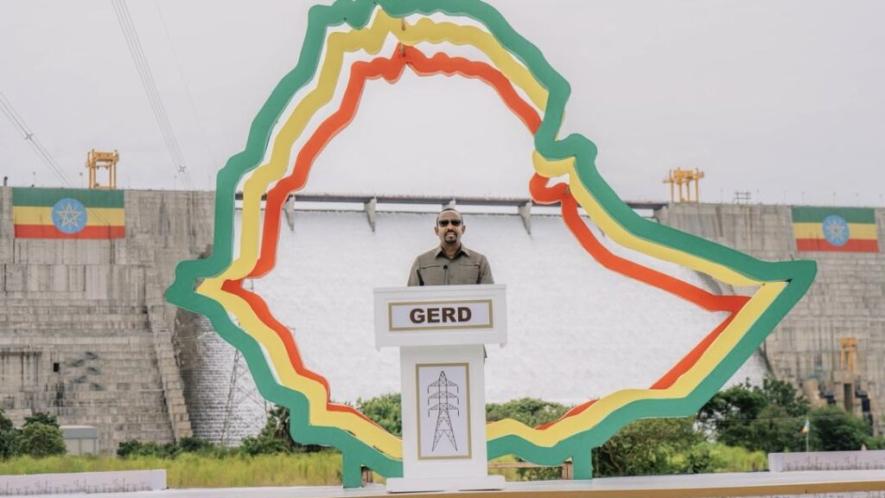
Ethiopian PM Abiy Ahmed inaugurating the GERD. Photo: Abiy Ahmed / X
Ethiopia has inaugurated the Grand Ethiopian Renaissance Dam (GERD), Africa’s largest hydroelectric project, in a move hailed at home as a triumph of self-reliance but viewed by Egypt and Sudan as a threat to their water security.
The USD 5 billion megaproject on the Blue Nile, one of the Nile’s two main tributaries just 14 kilometers (9 miles) from the Sudanese border, was opened on September 9. Stretching 1.8 kilometers wide and rising 145 meters tall, the GERD is designed to generate 5,150 megawatts (MW) of electricity, more than doubling Ethiopia’s existing capacity and rivaling major dams like the Aswan High Dam in Egypt or the Inga dams in DRC. Officials say the dam will not only address chronic domestic power shortages but also allow the export of surplus electricity, fueling industrialization and economic growth.
Prime Minister Abiy Ahmed, presiding over the inauguration, hailed the project as both a national and continental achievement, saying, “The Renaissance Dam is a testament to Ethiopia’s resolve and a beacon for Africa’s future,” describing the dam as proof that African nations can undertake transformative projects without external dependency. He added that the facility will “provide clean energy, light up the region, and change the history of black people.”
ታላቁ የኢትዮጵያ ህዳሴ ግድብ – The Grand Ethiopia Renaissance Dam #PMOEthiopia pic.twitter.com/JsI3LilA5w
— Office of the Prime Minister – Ethiopia (@PMEthiopia) September 12, 2025
Ethiopia, home to more than 100 million people, has one of the fastest-growing populations in Africa but continues to face severe electricity shortages. Currently, nearly half of the population lacks reliable access to power. As of 2022-2023, about 55% of the population had access to electricity.
Regional tensions and stalled negotiations
Nevertheless, the dam’s completion has not come without controversy. The Blue Nile, one of the Nile’s two main tributaries flows north into Sudan and then into Egypt, which depends on the river for its freshwater. Both Cairo and Khartoum fear that GERD could threaten their water security, especially during drought years, if Ethiopia unilaterally controls the flow.
Years of negotiations between Ethiopia, Egypt, and Sudan have failed to produce a legally binding agreement on how the dam will be filled and operated. Egypt, in particular, has accused Addis Ababa of unilateral actions that ignore downstream interests, while Ethiopia insists the project will not significantly harm its neighbors and is vital for its development.
Joint Egypt-Sudan statement
In a joint statement after consultations, the two countries said, “The consultations also addressed developments regarding the Ethiopian Dam. The two parties agreed that the Ethiopian Dam, in violation of international law, entails serious consequences for the two downstream states and represents a continuous threat to stability in the Eastern Nile Basin in accordance with international law, particularly with regard to the grave risks arising from Ethiopia’s unilateral steps to fill and operate the dam, as well as those related to dam safety, unregulated water discharges, and the handling of drought conditions.”
Adding that, “Ethiopia must revise its policy in the Eastern Nile Basin to restore cooperation among the basin countries. Both sides further affirmed that the issue of the Ethiopian Dam remains a matter among the three states (Egypt, Sudan, Ethiopia) and rejected any attempts to involve other basin countries in this contentious issue.”
Ethiopian position
But, PM Abiy Ahmed has repeatedly said that there is no intention to affect the waterflow to the region, in 2020 he said “Ethiopia has absolutely no desire whatsoever to cause harm to Egypt nor to Sudan. But #Ethiopia does not want to live in darkness. Our light will only support them – not harm them. We will continue on our #GERD track with no harm to both countries.”
Adding in 2022 that the GERD will help Sudanese water infrastructure to be operated optimally as the water flow would be regulated.
“Egypt also benefits from water conservation at the GERD, instead of wastage of billions of cubic metres of water to evaporation and in downstream flood plains. The GERD also helps to prevent future spillage that overtops the Aswan Dam.” He reiterated the same on the inauguration of the dam in 2025.
The road ahead
The inauguration of the Grand Ethiopian Renaissance Dam, as Ethiopian officials put it, is a milestone for Ethiopia’s development ambitions. While Addis Ababa celebrates the GERD as a transformative leap toward energy self-sufficiency and continental progress. The project was largely financed by Ethiopia itself, and a 2013 China loan of USD 1.2 billion. The downstream nations Egypt and Sudan continue to voice fears over water security and the broader geopolitical consequences of unilateral action. With negotiations stalled and mutual distrust lingering, it’s uncertain whether the three states can forge a cooperative and integrative framework to balance development with shared resources and regional stability.
Courtesy: Peoples Dispatch
Get the latest reports & analysis with people's perspective on Protests, movements & deep analytical videos, discussions of the current affairs in your Telegram app. Subscribe to NewsClick's Telegram channel & get Real-Time updates on stories, as they get published on our website.










